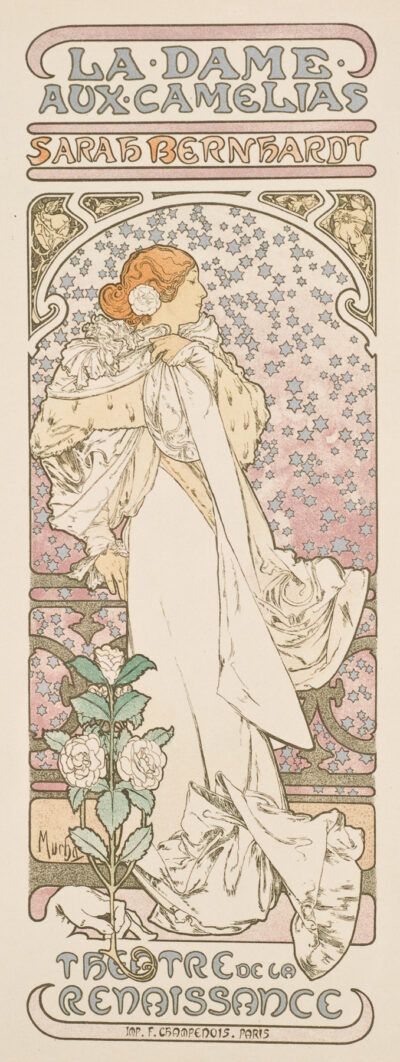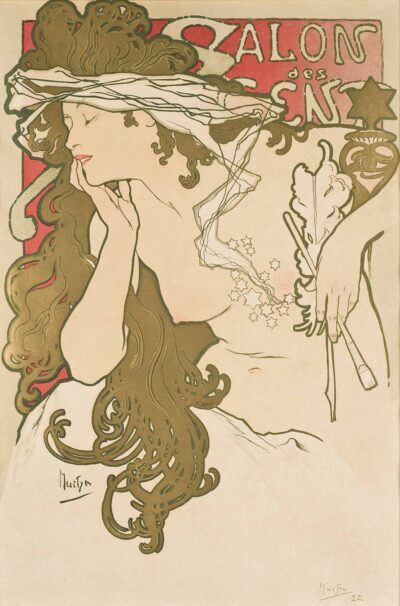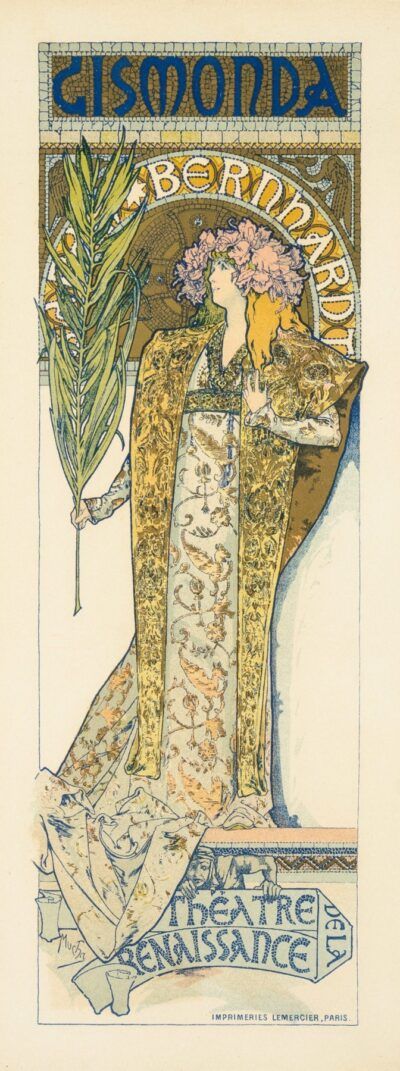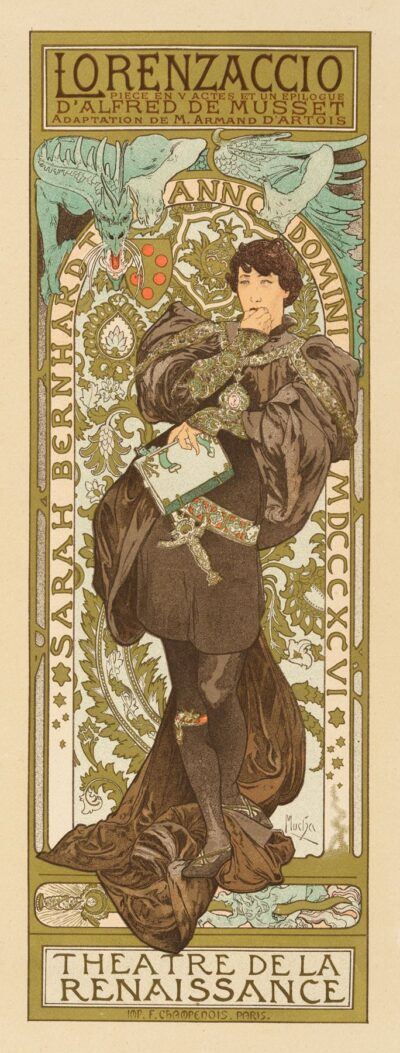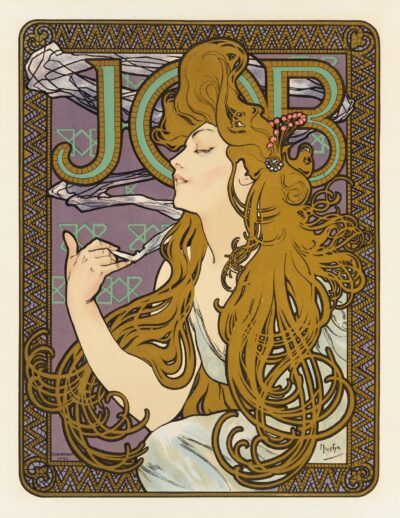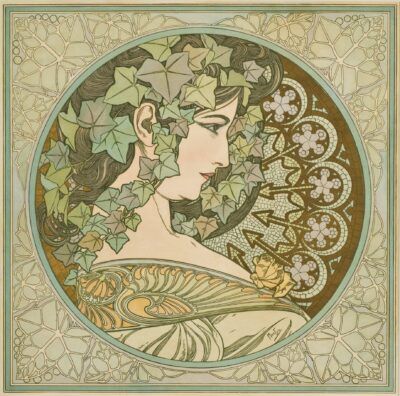Alphonse Mucha
(Czech, 1860- 1939)
Biography
Alphonse Mucha was an extremely influential artist whose name will always be most associated with the Art Nouveau movement. His graphic designs, and in particular his large posters, came to epitomize the very embodiment of this style.
Mucha was born in Ivancice, Moravia in the Czech Republic. Under the patronage of Count Khuen-Belassi, a wealthy landowner who first commissioned Mucha to paint murals in his castle, Mucha studied at the Academy of Fine Arts in Munich. After two years in Munich, he was sent to study at the Academie Julian in Paris. After a couple of years the supporting funds were discontinued and Mucha was to become the proverbial starving artist. He was 27 years old with no money and no prospects.
For approximately five years he struggled to make ends meet, working in illustration for popular magazines and borrowing money. He shared a studio with Gauguin for a short period of time. Mucha gave impromptu art lessons. All the while he was formulating his own theories and precepts of what he wanted his art to be. In December of 1894 he was given an opportunity that would change his life. During the Christmas holidays, he was called upon to create a poster for Sarah Bernhardt’s play Gismonda. The poster, which appeared on January 1, 1895 was the declaration of his new art. This near life-size design was a sensation not only with Miss Bernhardt, but also the adoring public. Its success made Mucha a celebrity. Miss Bernhardt contracted him to do her posters, costumes and sets for her plays for close to a decade.
Commissions poured in. In 1898 he moved to a new studio, had his first one-man show and began publishing graphics with Champenois. For the World’s Fair in Paris in 1900, Mucha designed the Bosnia-Hercegovina Pavilion. He partnered with the goldsmith Georges Fouquet to create jewelry based on his designs. He also published Documents Decoratifs, a visual statement of his artistic theories. This portfolio, which contained 72 plates, was used as a textbook for years by art schools and influenced a whole generation of artists.
His association with Miss Bernhardt led to an entry into social circles where he was introduced to Charles Crane, a millionaire from Chicago. In 1909 Crane provided financing for a project that Mucha considered his life’s ambition, “The Slav Epic”. Covering the history of the Slavic people up to the nineteenth century, twenty massive paintings (approximately 24 x 40 feet) chronicling major events in the Slav nation were presented to the city of Prague in 1928.
Mucha’s work today can be found in leading museums and private collections worldwide. His name will always be synonymous with the Art Nouveau movement, and the tremendous demand for his work has created a level of rarity that has outpaced even that of Toulouse-Lautrec.

